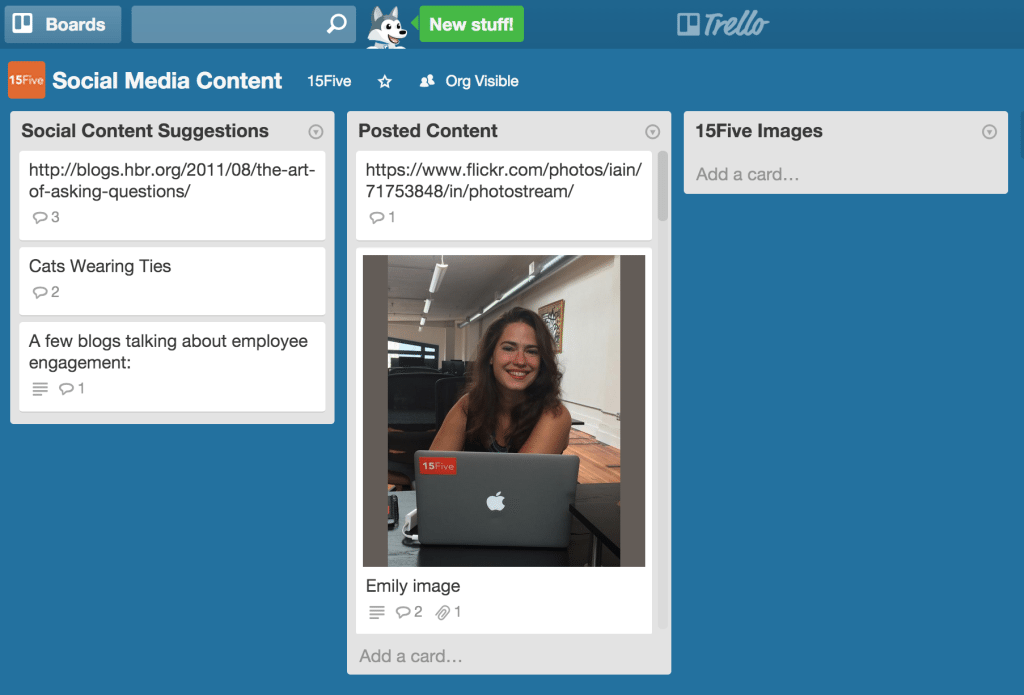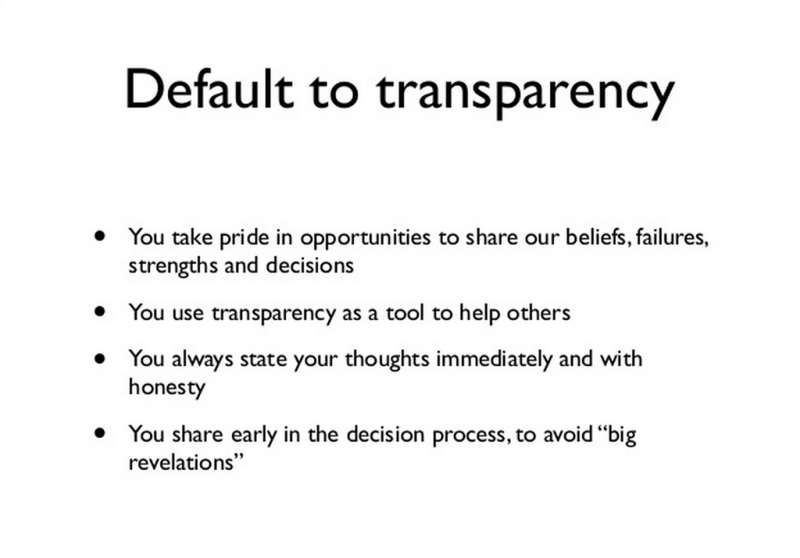10 Ways to Make Your Employees Your Brand Ambassadors
Happy customers are the best brand ambassadors. You know that. But you know who comes in just behind them? Your employees. While it’s true that people care a great deal about what their peers say about a brand, they also pay attention to what your workforce says about you. And while customer endorsement can be hard to come by, employee endorsement just takes a few simple tweaks.
What is an Employee Brand Ambassador?
An employee brand ambassador promotes a brand and its product or services to their network. This is often part of a collaborative effort between the ambassador and the company to increase brand awareness and drive sales. Though some businesses reach out to celebrities or influencers, your employees can be a much more reliable source for broadening your brand’s influence.
A recent study on employee activism found that 50 percent of employees share pictures and videos on social media about their work, and a third are doing so without any encouragement from their employer. If your employees are already out there talking about your company, how do you leverage this without being heavy-handed?
The answer lies in providing them with tools and resources to make it easier to promote your brand and in helping them feel invested in their work. You don’t need elaborate brand ambassador programs that make social sharing a task on a checklist; just about anyone can be a brand ambassador, from salespeople to HR reps to engineers! Brand promotion can and should become a part of your culture. Below are some tips on how to make your employees your biggest cheerleaders.
#1 Communicate your vision clearly:
Your vision stands for a lot, but it essentially tells employees how your core values relate to your long-term goals. Employees that understand this big picture feel more invested in their work and are more likely to talk about it.
Most leaders use jargon when conveying their vision. They might say, “We want to be world leaders in customer service” or “We want to capture the largest market share.” The result? Employees are left scratching their heads and feeling disconnected from the company’s purpose.
To avoid this, explain your vision to employees using language and examples that tell employees what they can do to bring your vision to life. In their book, Made to Stick, Chip and Dan Heath provide a great example of this. Nordstrom, a department store known for top-notch customer service, uses employee (“Nordie”) stories to convey their USP, or Unique Selling Proposition. Highlighted are a Nordie who ironed a new shirt for a customer, and another who warmed up a customer’s car. These examples help new employees remember their purpose, and also to what lengths they should go to fulfill it.
#2 Know your employees:
Just as you spend time and energy getting to know your customers, you must get to know your internal advocates too. What are their long-term goals? What about their work excites them? Getting answers to questions like these helps you understand what will motivate your employees to speak up for your brand.
Virtual groups like team chats and company social platforms can help employees bond on a personal level. Away from the desk, sponsoring team-building activities such as board game marathons and go-kart racing gives employees more freedom to connect and, ideally, share their enthusiasm online.
Get your employees off to a good start
#3 Embrace transparency:
Above you’ll see how the company Buffer defines transparency in their core values. Joel Gascoigne, their CEO, neatly sums up the benefits, “Transparency breeds trust, and trust is the foundation of great teamwork.” Buffer is one of the best examples of transparent companies, publicly sharing salaries, equity, metrics, and funding.
Says Buffer’s Director of People Courtney Seiter, “As long as we all share information, that gives everyone full context to make connections we might otherwise have missed, and to have the full trust in the team because they understand the full context of what’s going on.”
If you’re not comfortable with making your stats public, start small by sharing what’s going on across teams internally. You’ll be surprised at how much trust and confidence it instills in people.
#4 Ditch rules, provide resources instead:
“Provide employees with ‘guidelines’ to talk about your company.” Often-heard advice? Yes. Fun to follow? Of course not! Ultimately, it makes employees shy away from sharing anything about your company for fear of saying something wrong.
Instead of setting rules about social media sharing, provide your team with resources they can use. For instance, every week, send out a newsletter about your latest marketing campaigns, product launches, blog posts, and so on. This keeps everyone in the loop and encourages them to pitch in with a quick share.
#5 Provide basic training:
It’s hard to believe that an employee might not be social-media-ready in this day and age, but it can help to have training sessions to boost their marketing skills if their work doesn’t directly relate to it. For instance, you might hold a monthly social media workshop to highlight communities where your customers hang out and encourage employees to participate.
Take a cue from Zappos, who trains every new employee to use Twitter. They’re encouraged to share interesting snippets from their workday, as well as resources that they might find useful. Here’s a sample of their tweets:

Encouraging your employees to post positive or interesting experiences like this on social media can give customers a glimpse into your company culture.
#6 Organize your content sharing efforts:
Another step towards making content sharing easy is making it accessible. Keep a central storage location with all your published content for everyone on the team to use. A shared drive on the network is a start, but putting content in the cloud makes it accessible from anywhere.
To make employees feel more involved, encourage them to makes suggestions for the company’s social media content. For instance, 15Five has a “Social Media Content” board where employees can drop in interesting links, files, and memes.

#7 Do something worth writing about:
Don’t think first about fancy “fun” perks like free food and ping-pong. Instead, think about small steps towards employee betterment.
Let’s look at Buffer again as an example: The company helps employees read more, and their people love it. Hailley Griffis from the team shares on Medium, “When I started working at Buffer, the amount that I read went up a huge amount and I’ve heard from other Buffer teammates that they saw the same. The biggest reason? I had unlimited free books and a Kindle shipped to me before I even started my first day.”
Something as simple as promoting learning is enough to earn you a shout-out at dinner table conversations and in blog posts.
#8 Encourage content creation across the team:
A post on product management tools is best when it comes directly from your senior product manager, not from a 10-minute interview with them. Encouraging your team to produce content has many benefits, but most importantly it provides them an incentive to share their work and be proud of their expertise.
In fact, companies such as Intercom have made content creation mandatory for every employee. Managing Editor John Collins shares, “People get recognized for it internally. It benefits your career at Intercom if you produce content.”
Motivate employees to share their learnings on your blog. Your content creation team can guide them to their best ideas and help polish their work, but for the most part, let the experts do the heavy lifting.
#9 Show employees how much you value them:
You don’t have to be extravagant with praise; small gestures such as handwritten notes or a thoughtful email can do the trick, too. But however you do it, be sure to let employees know that their work is impacting the company’s overall success. How else will they feel invested in their jobs?
If you’ve just wrapped up a major campaign, share numbers across the team and mention employees who contributed to its success. If certain employees’ posts about your company are showing results, highlight their efforts to show them that it counts.
Empower employees to develop their brand:
Ever since the term “thought leadership” was coined, CEOs have scrambled to ramp up their brands as progressive thinkers in their industries. But can you guess what matters to customers more than the voice of a CEO? The individual voices of your employees! Clearly, it’s in your interest to help them build their own personal brands.
While most professionals understand that branding is important, not everyone works on it. A good way to encourage employees to develop their own brand is to have a common place for sharing their blogs, side projects or social media posts, where everyone can see and appreciate their work.
For instance, take a look at how Spencer Fry, CEO of Podia, promotes his CMO’s weekly newsletter:

Do Brand Ambassadors Work?
Now that you understand how to encourage your employees to become ambassadors, you might be asking yourself, “Is all of this effort really worth it?” Of course it is! In today’s world of social media, your employee brand ambassadors can potentially network with hundreds, if not thousands, of people. Their networks can provide some of the most important connections needed for growth.
When properly trained, your employee brand ambassadors can field all sorts of questions and inquiries from people wanting to learn more about your organization, both as potential clients and as potential job candidates. These employees can help grow your brand by providing a positive first impression for people.
We hope these tips help you boost employee engagement and encourage employees to become brand ambassadors. Just remember to avoid overdoing it. If your employees’ followers are suddenly flooded with posts about your company, it will do more harm than good. Be sure your employees’ appreciative posts are genuine and relevant to the platform, rather than forced and inappropriate.
Over to you: how do you empower employees to talk about your brand? Please share in the comments below!
About the Author

Andy Varas is the Content Manager at SnackNation, where he dedicates himself to helping businesses create an engaging environment for their employees and making health & wellness a priority in the workplace.
Get caught up every month on all things HR. Don't worry, we promise we won't spam you.










